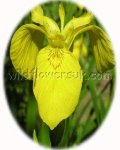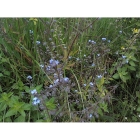 | ||
Perfect for pollinators Field forget-me-not -myosotis arvensis– is most commonly found on dry arable land and roadsides in full sunlight, where plants will attract a range of insect life, including bees. Field forget-me-not is a low growing species with tiny pale blue flowers that appear from April to September. Plants looks best growing with other low growing wild flowers such as Scarlet Pimpernel, Wild Pansies and Field Pansies. How to grow Field forget-me-not Seeds Field forget-me-not seeds should be sown in the autumn, outside, where they are to flower, and covered lightly with soil. Seeds are usually easy to germinate. Field forget-me-nots are annuals or biennial and to encourage flowering in successive years, should be left to self-seed. RHS Perfect for Pollinators. The RHS Perfect for Pollinators mark is only given to plants that support pollinating insects in gardens. Bees, butterflies, moths, hoverflies and many others visit flowers to feed on nectar and pollen; while doing so they transfer pollen and increase seed set and fruit development. Find out more at: rhs.org.uk/plants To discover more plants for Bees, simply enter the word "pollinators" into the search box above. To buy Field forget-me-not seeds To purchase Field forget-me-not seeds, please select a quantity above and click add to cart. To ensure the best chance of success, we sell all of our wildflower seeds by weight, which ensures each wildflower seed packet contains a good quantity of seeds. The recommended sowing rate is 1 gram per square metre, and the number of Field forget-me-not seeds per gram is approx. 4000. All of our Wildflower seed packets contain seeds of Native British provenance. Summary type - biennial, colour - Blue, height - 25 to 50cms, flowering months - April, May, June, July, August, September, habitat - Bare, Open Ground (eg Arable field margins, disturbed, waste ground) attracts bees | ||
Printed 06/07/2025 00:06:01
st121_1 type biennial colour blue height 25 to 50cms flowers april may june july august september habitat bare open ground eg arable field margins disturbed waste ground rhs perfect for pollinators pollinating insects bees butterflies moths hoverflies







 added to basket
added to basket